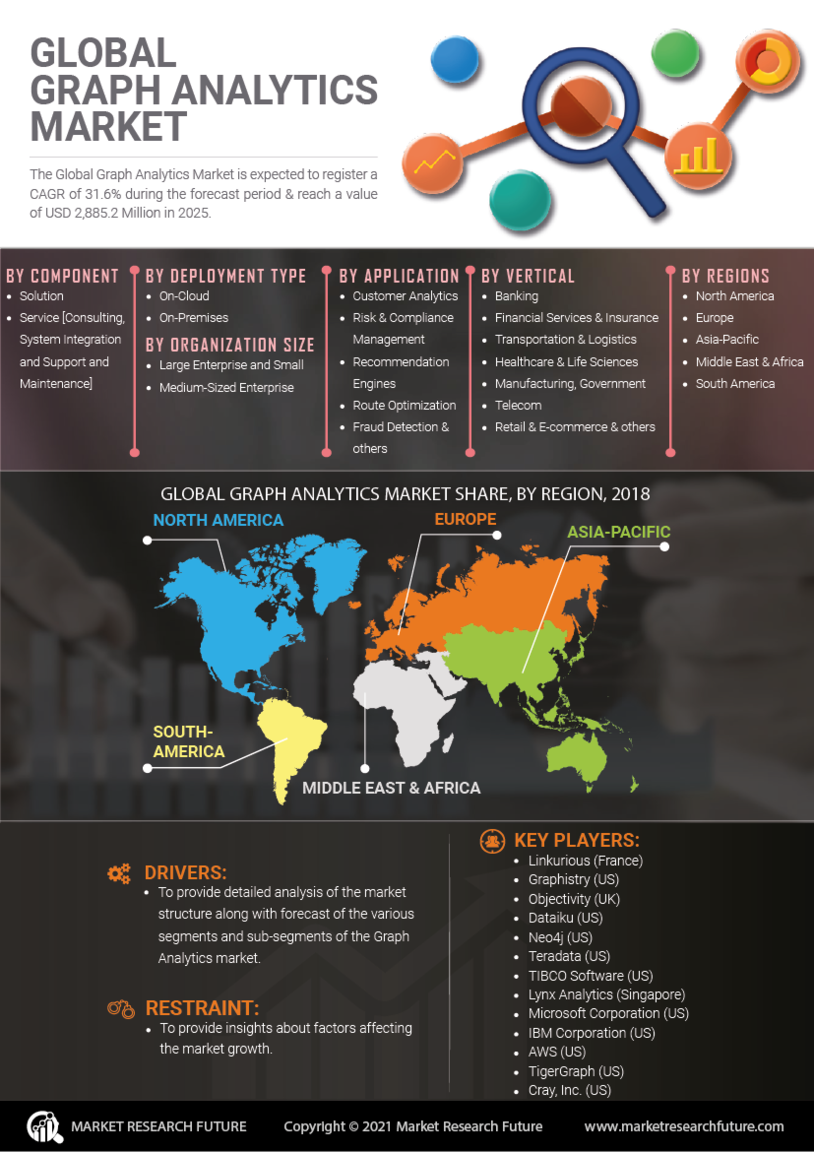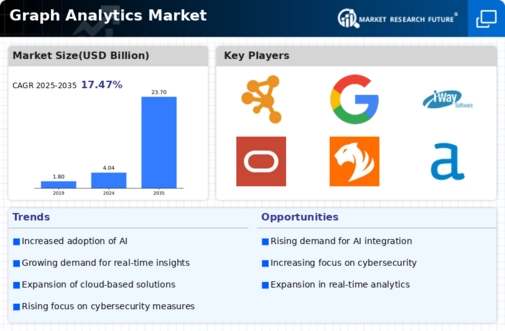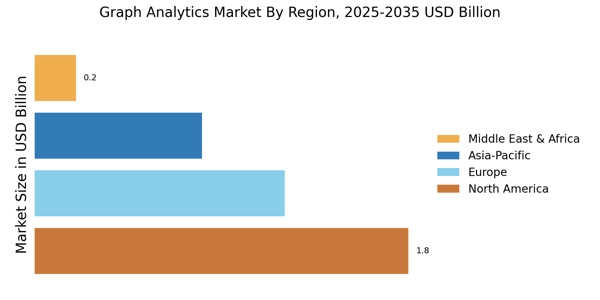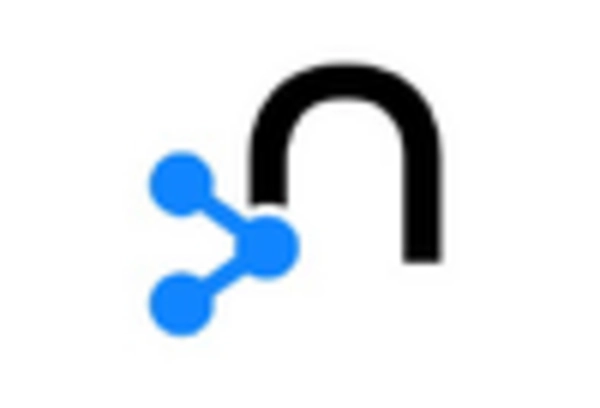Growing Importance of Cybersecurity
The Graph Analytics Market is increasingly recognized for its role in enhancing cybersecurity measures. Organizations are leveraging graph analytics to identify and mitigate potential threats by analyzing relationships between various data points. This capability is particularly valuable in detecting anomalies and understanding attack vectors, which are critical for safeguarding sensitive information. As cyber threats continue to evolve, the demand for graph analytics solutions that can provide real-time threat detection and response is likely to increase. The market for cybersecurity analytics is projected to expand significantly, with graph analytics playing a pivotal role in this growth. Consequently, the Graph Analytics Market is poised to benefit from the heightened focus on cybersecurity.
Emergence of Advanced Analytical Tools
The Graph Analytics Market is witnessing the emergence of advanced analytical tools that facilitate the exploration of complex data relationships. These tools are designed to handle large volumes of interconnected data, enabling organizations to uncover hidden patterns and trends. The integration of machine learning and artificial intelligence into graph analytics platforms enhances their capabilities, allowing for predictive analytics and real-time data processing. As organizations increasingly adopt these advanced tools, the demand for graph analytics solutions is expected to rise. This trend is indicative of a broader shift towards more sophisticated analytical methodologies, which are essential for navigating the complexities of modern data environments. The Graph Analytics Market is thus positioned for substantial growth as these tools become more prevalent.
Expansion of IoT and Connected Devices
The Graph Analytics Market is significantly influenced by the expansion of the Internet of Things (IoT) and the proliferation of connected devices. As the number of devices continues to grow, the volume of data generated increases exponentially, creating a need for effective data management and analysis solutions. Graph analytics provides a robust framework for understanding the relationships between devices, users, and data points, enabling organizations to optimize their operations and enhance user experiences. The integration of graph analytics with IoT data is expected to drive innovation and efficiency across various sectors. As such, the Graph Analytics Market is likely to see substantial growth as organizations seek to capitalize on the opportunities presented by IoT.
Increased Demand for Data-Driven Insights
The Graph Analytics Market is experiencing a surge in demand for data-driven insights as organizations seek to leverage complex data relationships. This trend is driven by the need for enhanced decision-making capabilities, which are increasingly reliant on data analytics. According to recent estimates, the market for graph analytics is projected to grow at a compound annual growth rate of over 30% through the next few years. Companies are recognizing that traditional data processing methods are insufficient for analyzing intricate data structures, leading to a greater adoption of graph analytics solutions. As businesses strive to remain competitive, the ability to extract actionable insights from vast datasets becomes paramount, thereby propelling the growth of the Graph Analytics Market.
Rising Adoption of Social Network Analysis
The Graph Analytics Market is experiencing a notable rise in the adoption of social network analysis tools. Organizations are increasingly utilizing these tools to understand customer behavior, enhance marketing strategies, and improve user engagement. By analyzing social networks, businesses can identify influential nodes and optimize their outreach efforts. This trend is supported by the growing recognition of the value of social data in shaping business strategies. As companies seek to harness the power of social networks, the demand for graph analytics solutions tailored for social network analysis is expected to grow. This shift underscores the importance of understanding relationships and interactions in the Graph Analytics Market.


















Leave a Comment